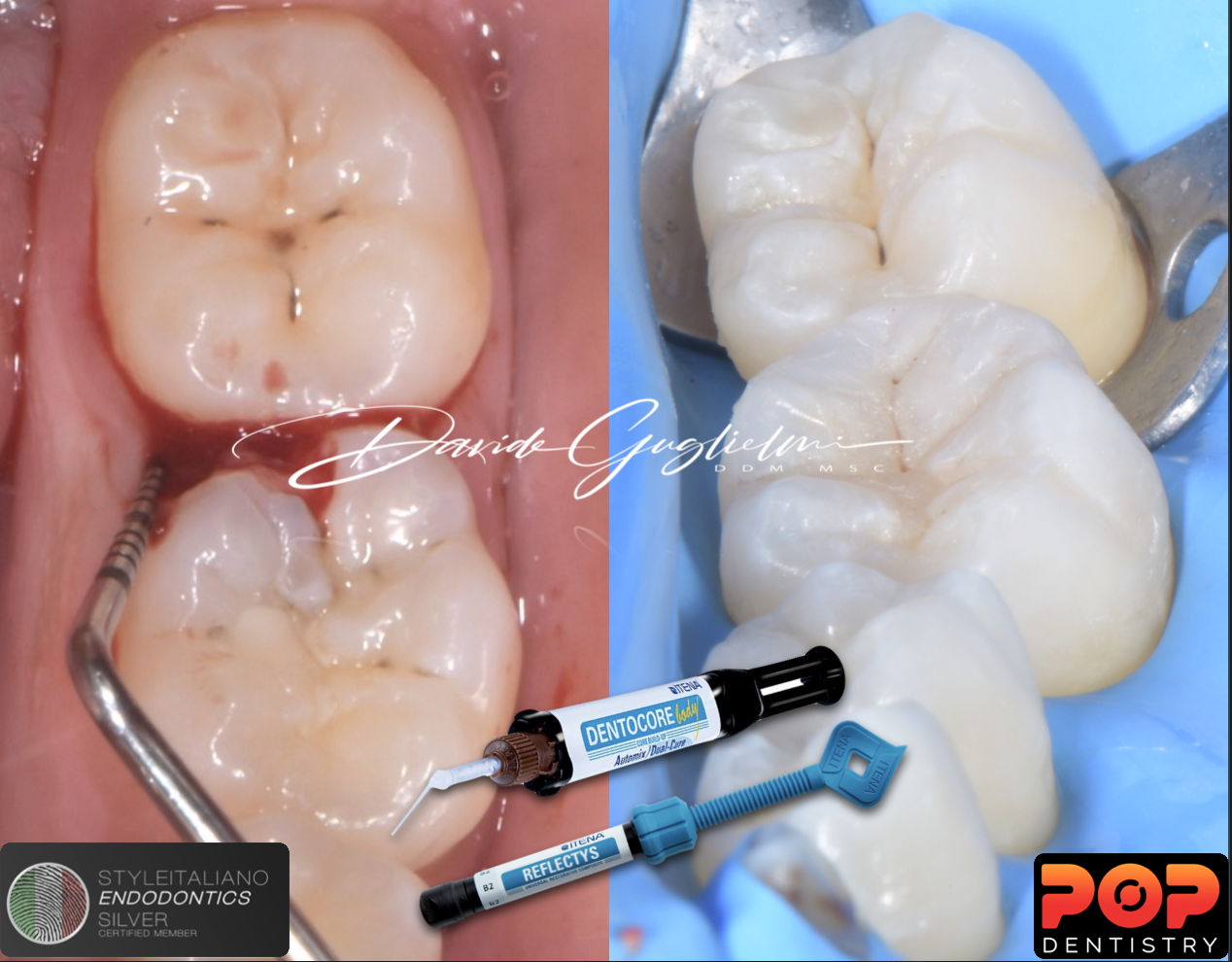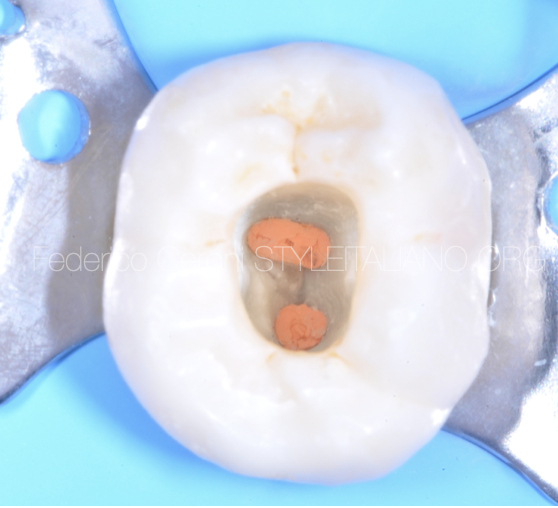
Direct composite veneers
10/11/2022
Federico Ceroni
Warning: Undefined variable $post in /var/www/vhosts/styleitaliano-endodontics.org/endodontics.styleitaliano.org/wp-content/plugins/oxygen/component-framework/components/classes/code-block.class.php(133) : eval()'d code on line 2
Warning: Attempt to read property "ID" on null in /var/www/vhosts/styleitaliano-endodontics.org/endodontics.styleitaliano.org/wp-content/plugins/oxygen/component-framework/components/classes/code-block.class.php(133) : eval()'d code on line 2
A 60 years old male came to our office due to abrasion and erosion he had on the front teeth. The involved teeth were vital and without any symtomps. The intra-oral examination showed an important abrasion of the vestibular face of the two central incisors, while radiographic examination showed no problems on the pulp and the radicular part of the teeth. We decided to perform direct composite veneers to restore the right buccal volume and protect the residual structure of the teeth. The alternative would have been to perform indirect full ceramic veneers, but for both economic and time problems it was decided to perform direct reconstructions
The restoration of an anterior tooth have in general different mechanical and esthetic challenges and several aspects have to be considered: First of all the remaining tooth structure and in particular the presence of enamel, number of remaining walls and the quality of dentin. The presence of enamel is essential to be able to perform an adhesive maneuver and a stable restoration over time. The quality and the color of the dentin, must be carefully evaluated for the choice of the right composite, capable of masking discolored dentins that could compromise the aesthetic result of our reconstruction. The age of the patient and the characterizations of the adjacent teeth are other aspects to consider. The more the adjacent teeth have particular colors or stains, the more difficult it will be to reproduce them in our restoration. It is therefore important to evaluate the use of a direct technique only when we evaluate the ability to correctly reproduce all the peculiarities of the adjacent teeth.

Fig. 1
As we can see from the pre operative picture, the patient of this case has a homogeneous color, easy to reproduce, and the adjacent teeth do not show particular characterizations. In cases like these, performing a direct restoration is simple and predictable. With the use of two composite masses we will be able to recreate the contrast that dentin and enamel have in a natural tooth, without making the reconstructive phase too complicated.
After placing the rubber dam with the split dam technique, the stains were removed, the unsupported enamel was removed with an abrasive disk and the surfaces of the teeth were sandblasted.
An adhesive procedures was performed using the quick bond universal adhesive system, no ortophosporic acid was used.
First I applied 3 layers of A prime, lived undisturbed for 5 sec and then dried with a blast of air, then I applied 2 layers of B bond also dried with a blast of air and cured for 20sec with a light-cure unit.
Then I started the layering steps.
A proper layering technique is needed to achieve high level results.
A dentin composite layer was used to recreate the mamelons and most of the cervical part of the teeth, in this case I chose a A2 Reflectys composite by Itena Clinical.
In the end a more translucent composite was used to recreate the enamel layer. That was necessary because the enamel structure has a highly translucent appearance; for that layer I used the B2 Reflectys composite by Itena Clinical, a composite with an high value that can reproduce the enamel effect.
The final light curing is 60 seconds long and it is better performed using an air-blocking system. This procedure will provide the composite resins' complete polymerization, improving surface resistance and giving better polishing performances.
At the end of the video you can see the final result after rehidratation of the tooth and after all the finishing and polishing steps and a detail of the characterizations obtained, essential to give the restoration a natural appearance.
Conclusions
Adhesive dentistry allows us to solve complex cases with a very conservative approach. The analysis of the residual structures of the tooth will be fundamental in order to understand what the right treatment plan may be.
A minimally invasive approach is essential for a correct resolution of problems involving anterior teeth. Our goal must be to restore correct aesthetics and function while preserving the dental structures as much as possible and with the right knowledge we can easily solve apparently complex clinical cases like this one.
The key to obtain a restoration that integrates correctly is to choose the correct shade and the composite masses. To do this, it is essential to analyze the color and translucency of the teeth adjacent to those we need to layer.
A more saturated composite will be needed to reconstruct the internal part of the tooth, a more translucent composite will allow us to reconstruct the external part.
Reflectys composite by Itena Clinical is able to make us obtain these results in a simple and predictable way and this is what we all need in our daily practice.
Bibliography
Vanini L. Light and color in anterior composite restorations. Pract Periodontics Aesthet Dent. 1996 Sep;8(7):673-82.
Vanini L, Mangani F, Klimovskaia O. Conservative restoration of anterior teeth. Viterbo (Italy): Editing ACME; 2005. 5 S.Chersoni,P.Suppa,S.Grandini,G.Goracci,F.Monticelli,C.Yiu,C.Huang,C.Prati,L.Breschi,M.Ferrari,D.H. Pashley,and F.R. Tay Dent Res 83(6);459.2004
Perdigao J. Dentin bonding as a function of dentin structure . Dent Clin North Am 2002;46:277-301
Dietschi D. Spreafico R. Current clinical concepts for adhesive cementation of tooth-colored posteriors restorations. Pract Periodontics aesthet Dent 1998;10:47-54






